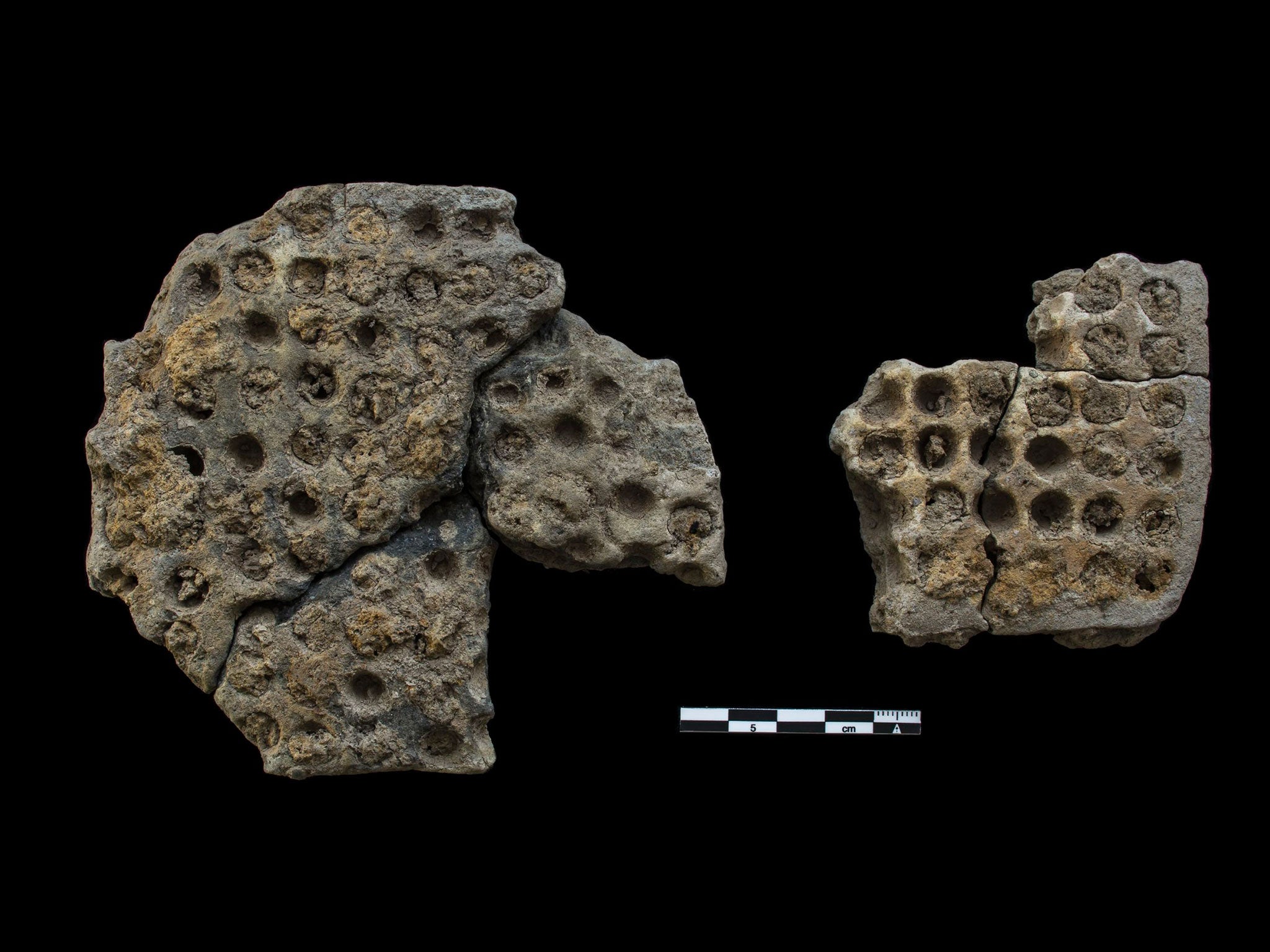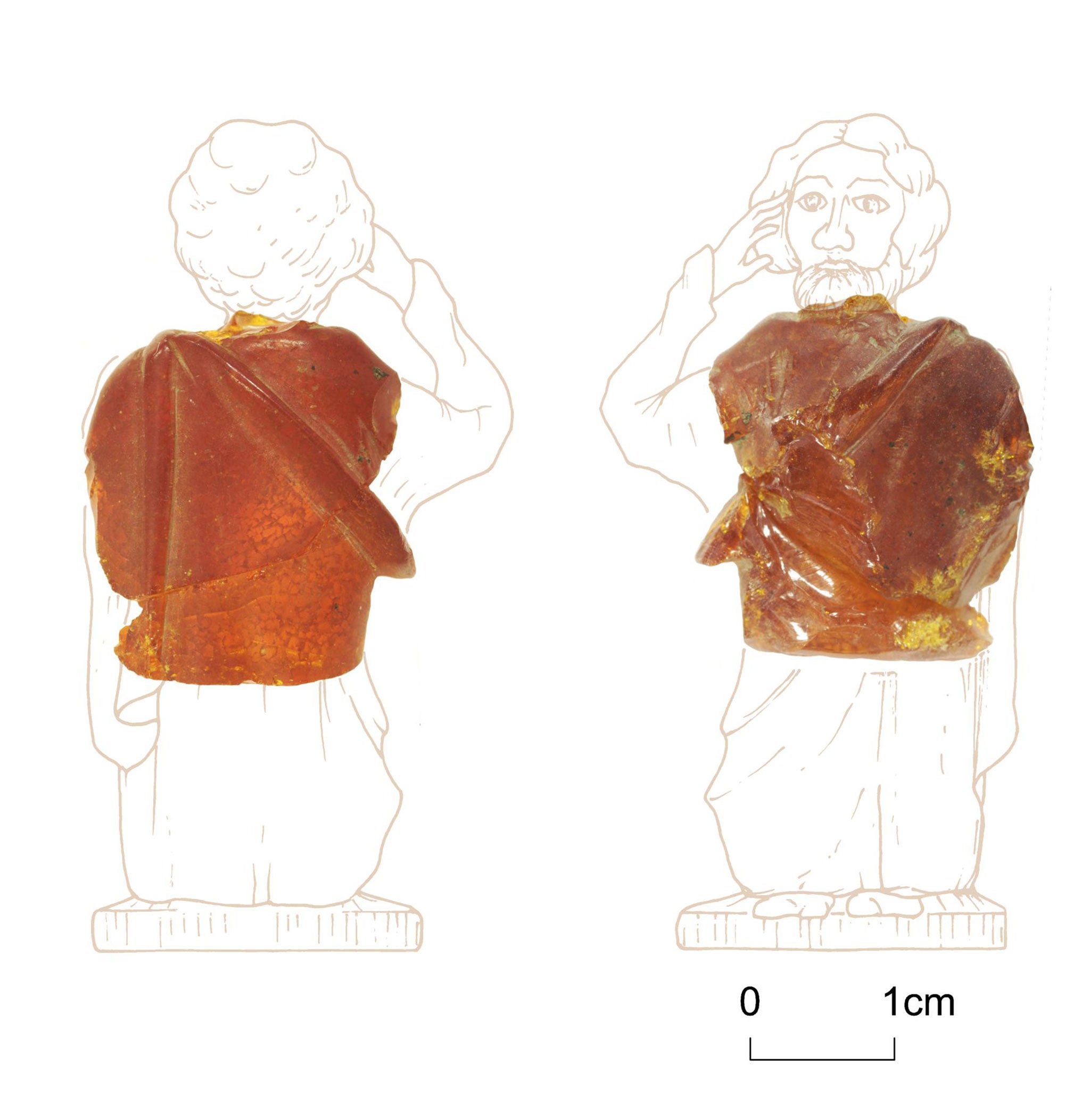New light shed on Royal sex scandal as ancient Roman remains unearthed
Scattered across the site and buried in a series of pits, the archaeologists have found large quantities of high-status Roman products

Your support helps us to tell the story
From reproductive rights to climate change to Big Tech, The Independent is on the ground when the story is developing. Whether it's investigating the financials of Elon Musk's pro-Trump PAC or producing our latest documentary, 'The A Word', which shines a light on the American women fighting for reproductive rights, we know how important it is to parse out the facts from the messaging.
At such a critical moment in US history, we need reporters on the ground. Your donation allows us to keep sending journalists to speak to both sides of the story.
The Independent is trusted by Americans across the entire political spectrum. And unlike many other quality news outlets, we choose not to lock Americans out of our reporting and analysis with paywalls. We believe quality journalism should be available to everyone, paid for by those who can afford it.
Your support makes all the difference.A remarkable archaeological investigation is shedding new light on the Roman conquest of Britain – and on the geopolitical background to one of the murkiest royal sex scandals of British history.
Excavations in Yorkshire have unearthed the first ever archaeological evidence of high-status Roman influence in northern Britain.
It appears to confirm ancient historical accounts of a political and military alliance between the Roman Empire and northern Britain’s largest native kingdom.
Archaeologists, working in conjunction with Historic England and funded by Highways England, have unearthed the remains of a previously unknown, yet high status, small town consisting of a mixture of Roman and native buildings, potentially associated in some way with Iron Age Britain’s most controversial ruler – Queen Cartimandua of The Iron Age Kingdom of Brigantia (modern Yorkshire and northern England).
In the settlement – located at Scotch Corner, 40 miles north of York – the archaeological excavations have unearthed what may well be the first archaeological evidence of Cartimandua’s deep collaboration with the Romans and her betrayal of native Britain.
Scattered across the site and buried in a series of pits, the archaeologists have found large quantities of high-status Roman products which had almost certainly been given or sold to the Brigantes.
Among the valuable artefacts unearthed so far are fine imported Roman glassware, beautiful glazed Roman tableware, imported drinking flagons, glass gaming counters, part of a fine Roman copper mirror and part of a rare and beautiful Italian-made amber statue.
It’s known from historical sources that the Romans gave Cartimandua and her rival supporters large amounts of wealth to reward her for betraying Britain’s resistance to Rome.
The political reality of the situation was that Britain was a patchwork quilt of independent tribal states – some of which were pro-Roman while others were anti-Roman.
To complicate things further, some of these native kingdoms and tribal confederations included within them both pro-and anti-Roman rival elements.
Indeed, that was the decidedly volatile situation in Brigantia itself. Queen Cartimandua (literally, in Celtic, ‘the Pony-Chaser’) was Queen of Brigantia in her own right – and seems to have been very pro-Roman. But her husband became decidedly anti-Roman and even eventually clashed militarily with them.
Cartimandua’s story is one of collaboration, marital strife and probable infidelity and ruthless treachery.
One of the leading anti-Roman British rebels, Caratacus (sometimes known today as Caractacus) sought sanctuary in Brigantia – but it’s ruler, Cartimandua, arrested him, put him in chains and handed him over to the Romans who gratefully rewarded her handsomely.
She then appears to have divorced her probably less pro-Roman husband (Venutius) almost certainly after having developed a relationship with his armour bearer, who she subsequently married. The royal love feud between the Queen and her ex-husband led to Venutius mounting two invasions of Brigantia. On both occasions, Roman occupation forces in southern Britain sent military help – but in the end, Venutius succeeded in defeating and removing his ex-wife from power.
The findings at the newly discovered small town at Scotch Corner were high-status goods probably supplied to Cartimandua and/or her pro-Roman Brigantian aristocratic supporters – precisely during this period of Roman collaboration and internal Brigantian civil conflict.

A key discovery at the site is a large collection of late Iron Age metal pellet moulds, thought to have been used for native coin manufacture. Research at the University of Liverpool has revealed that they were probably used to produce gold/silver/copper alloy native British coins – perhaps needed for massively increased levels of trade with newly arrived Roman merchants. The alloys detected in them are consistent with native British coin production. Their discovery may well be the first archaeological evidence of Brigantian coin production – because so far no coins of that particularly important British tribal kingdom have ever been found.
Significantly, fragments of up to 50 ceramic metal pellet mould trays have been discovered in the native British area of the Scotch Corner settlement. There were two types of tray – ones for producing 100 metal pellets each and others for producing just 50 slightly larger pellets – arguably to make larger coins.
In total, the trays, unearthed by the archaeologists, would have been capable of producing over 3000 metal pellets which would have been turned, with the help of a hammer and die, into coins. It is the most northerly archaeological evidence for Iron Age coin manufacturers in Europe.
The settlement itself appears to have been divided into two distinctly different areas – Roman and native. Facing onto the main London to Brigantia road were up to 40 Roman-style rectangular buildings – probably a mixture of domestic and industrial premises. Of those, around a dozen have been excavated by the archaeologists.
Some way behind them, and therefore set back from the road, were a probably similar number of Iron Age native British roundhouses. Some 14 of those have been excavated.
In a third and fourth area – to the north and south – archaeologists found a series of pits which had been used for the potentially ritual votive deposition of high value and sometimes probably deliberately broken high-status Roman artefacts. Iron Age religious tradition often involved the deliberate breaking of valuable objects to be buried as votive offerings to the gods.
The newly discovered Scotch Corner Roman artefacts represent the earliest known major archaeological evidence of Roman influence in northern Britain. For the first time, archaeology appears to confirm some crucial aspects of what Roman historians claimed was happening in Brigantia in the period immediately before the north of England was fully incorporated into the Empire.
It may also push back by up to a decade and a half, the probable date for the initial laying out of the northern section of the London-Brigantia Road (what is today the Yorkshire part of the A1 ). The road (probably originally, at least in part, a native trackway) was very slightly diverted to deliberately pass through the newly discovered Scotch Corner small town.
As the Roman buildings, potentially built in the mid-to late 50s AD, faced onto that road, the Roman highway may have been initially conceived in that decade, rather than the early 70s AD as had previously been thought.
As the route was without doubt used by the Roman military, it helps to illustrate archaeologically the substantial extent of a Roman military presence well before northern England was incorporated into the Empire. There is also an enigmatic as yet unexcavated rectangular feature at the Scotch Corner site which may turn out to have been a very early Roman fort.
“The discoveries illuminate a crucial period in the history of Britain – the very early presence of Roman wealth, power and influence in northern Britain,” said Neil Redfern, Historic England’s principal inspector of ancient monuments.
“The excavations at Scotch Corner are redefining our understanding of how the region was incorporated into the Roman Empire,” he said.
The newly discovered hybrid Roman and native small town is just eight miles from the probable Brigantian capital, now known as Stanwick, to which it was connected by an Iron Age road.
The finds were discovered through the £380m Highways England Leeming to Barton road scheme to upgrade the existing dual carriageway with a new three lane motorway. The extensive excavations have been carried out by Northern Archaeological Associates – and managed by Dr Jonathan Shipley and Helen MacLean from the archaeological section of the US engineering consultancy, AECOM, with support from Historic England.
Join our commenting forum
Join thought-provoking conversations, follow other Independent readers and see their replies
Comments